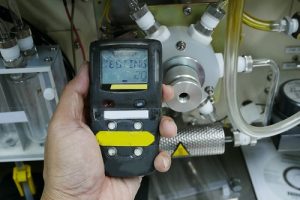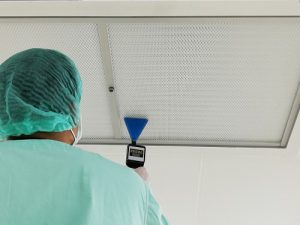The readings of all sensing devices drift or change reference points over time. This means their ability to display accurate results decreases and not that the machine is broken or malfunctioning.

There’s a simple solution to this problem: recalibrating them regularly. The process restores the normal function of your devices to make sure they perform at 100% efficiency. However, various gas detectors require different processes since each one uses unique technologies to operate. You have to choose the right approach to get the job done.
If you have a single gas detector in your facility, you can calibrate them manually or by using some tools. Learn more about these by reading on.
Ways to Recalibrate Your Gas Detector
Before anything else, review your equipment’s user manual. This will guide you on how to perform the calibration properly. You can also call the manufacturer if you have questions. Their customer service number is printed on the booklet.
Manual Recalibration
Manually calibrating a CO2, NH3, or H2S gas detector often involves examining its response to a test gas with known concentrations. Keep adjusting the equipment until its readings align with the parameters of the test gas. Just make sure the substance hasn’t expired to confirm the validity of the comparison.
If you need to adjust other gas detectors, you can reference them to the one previously calibrated. The process shouldn’t take over 5 minutes per sensing device, so it’s ideal if you’re working with a few pieces of equipment at a time. The Occupational Safety and Health Administration (OSHA) recommends doing this every 6 months.
Using Docking Stations
If you have dozens of single gas detectors in your facility, checking the units one by one will be a long and tedious process. Big teams and corporations use docking stations instead.
Docking stations are handy devices that charge and calibrate gas sensing monitors when they’re not in use. Simply place the detector in the station, and it automatically adjusts its settings overnight. That way, your employees can come to the factory or lab the next day without worrying about dead batteries or having to bump test the equipment.
Special Kits and Accessories
While using docking stations is the most convenient way to recalibrate your single gas detectors, they’re not cheap. Thankfully, getting special test kits and accessories is another option. They’ll save you time while being affordable and easy to come by.
These sets have everything you need to check your equipment and tweak its settings. Some test kits even allow supervisors to monitor sensing devices from remote locations. Ask your gas detection system supplier about these products.
Why Is Calibration Important?

Air Leak DetectionSingle gas detectors are crucial in labs, manufacturing plants, and other industrial facilities. These places have toxic and flammable fumes on-site, so monitoring their concentrations in the ambient air is essential in maintaining a safe and healthy working environment.
So, like any other measuring instrument, gas detectors need to be recalibrated and adjusted from time to time to make sure all their sensors and components are showing accurate readings. This allows your safety officers to respond quickly in case of leaks and similar issues.
Taking care of your CH4, NH3, or CO2 gas detector is easy if you have the right tools. Get in touch with DOD Technologies, Inc to breeze through your recalibration process. They can also assist you in choosing a monitor for your business.






